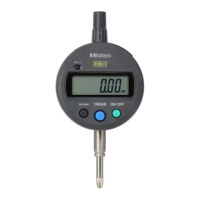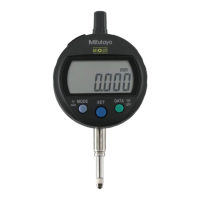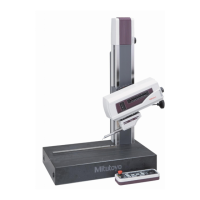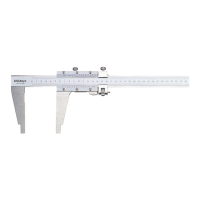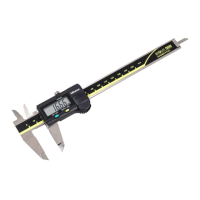No. 99MBB122A
4-1
4 MEASUREMENT
OPERATION
In this chapter, the surface roughness measurement with the SJ-210
is described according to the general procedures.
4.1 Overall Measurement Flow
Overall measurement flow is described below.
There are two types of operations: general operations and operations on demand. In the
flow chart below, solid lines indicate general operations and dotted line indicates
operations on demand.
Set up the SJ-210 (attaching/detaching the drive/detector unit,
and cable connection, etc.) according to the shape of the
workpiece to be measured.
Select either the AC adapter or built-in battery as the power
supply. Recharge the built-in battery as required.
Calibration is a means of adjusting the detector gain so that the
SJ-210 can yield correct measurements. This can be easily
performed by measuring a supplied precision roughness
specimen.
Modify the measurement conditions.
For information about measurement conditions that can be
modified, refer to the next page.
Measure the roughness specimen and display the result.
Measurement results can be saved, printed, output as SPC
data, and communicated with a personal computer.
After measurement, store the SJ-210 safely by detaching the
drive/detector unit, etc.
Settings the SJ-210
→ “3.2 Attaching and Detaching the Drive/Detector Unit”
Modifying the measurement conditions
→ “Chapter 7 MODIFYING THE MEASUREMENT
CONDITIONS”
Turning on the power supply
→ “3.4 Power Supply”
Performing calibration
→ “Chapter 6 CALIBRATION”
Executing the actual measurement of the roughness specimen
→ “4.3 Measurement”
Recording measurement results
→ “4.4 Measurement Result Management”
Daily maintenance
→ “Chapter 15 MAINTENANCE AND INSPECTION OF
SJ-210”
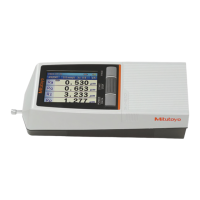
